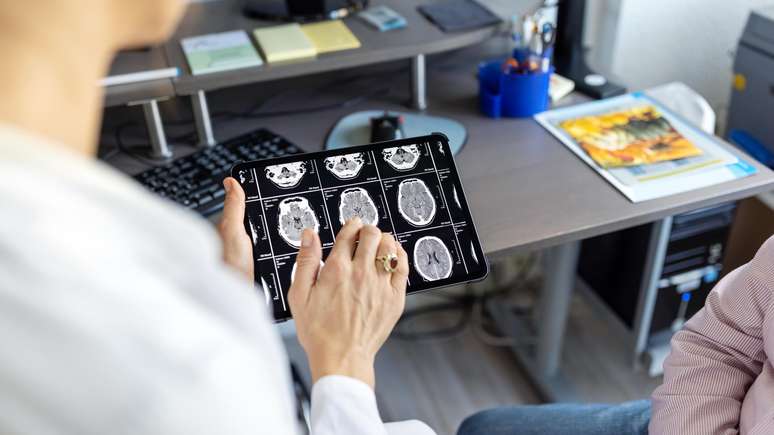The professional points out the warning signs and the way to prevent back pain and ensure safe running
Feel back pain while running, as well as after workouts, it’s not such a rare thing. This is because, like any other sport, this activity requires a certain amount of attention from those who practice it.
html[data-range=”xlarge”] figure image img.img-94573db366c2ed87d8defb969a86aa2e51ynohun { width: 774px; height: 516px; }HTML[data-range=”large”] figure image img.img-94573db366c2ed87d8defb969a86aa2e51ynohun { width: 548px; height: 365px; }HTML[data-range=”small”] figure image img.img-94573db366c2ed87d8defb969a86aa2e51ynohun, html[data-range=”medium”] figure image img.img-94573db366c2ed87d8defb969a86aa2e51ynohun { width: 564px; height: 376px; }HTML[data-range=”small”] .article__image-embed, html[data-range=”medium”] .article__image-embed {width: 564px; margin: auto 0 30px; }
Second sports orthopedic, surgeon and spine specialist, Alexandre GuedesMany road runners report experiencing lower back pain after an intense workout or at the end of a race.
“In many cases, it may simply be a normal response to physical exertion and muscle fatigue. However, it’s also possible that this pain is a sign of something more serious, especially if it’s recurring or persistent.”
This lower back pain in runners can have several causes:
- Muscle injuries (overexertion or lack of adequate warm-up);
- Joint injuries (repeated impacts or inappropriate movements);
- herniated discs (excessive pressure on the intervertebral discs caused by repetitive running);
- Spondylolysis or spondylolisthesis (conditions in which a vertebra breaks or slips)
- Problems with internal organs, such as the kidneys or gallbladder.
According to the professional, these inconveniences can also arise due to postural problems or muscle imbalances, since poor posture while running or muscle imbalances can cause back tension and pain.
Warning signs of back pain from running
“A pain should never be ignored. It must be observed and the runner must be aware of the appearance of certain warning signs that may indicate the need for greater attention and, possibly, consultation with a health professional”, warns the doctor.
The specialist points out the signs that deserve attention:
- Persistent pain: This is a sign that something else could be going on;
- Severe pain: If the pain is severe enough to impair your ability to run or perform other activities, something is wrong.
- Localized pain: if you feel tenderness or swelling, this could indicate a more serious injury or muscle strain;
- Numbness or tingling: This can be a sign of nerve problems and requires immediate medical attention.
- Fever or general malaise: If your back pain is accompanied by fever, unintentional weight loss, or other symptoms unrelated to physical exertion, it is important to seek medical assistance;
- History of back injuries.
prevention for runners
No runners who practice Find out which runners often want to interrupt their training due to low back pain. Therefore, treating pain means preventing its occurrence. According to Guedes, adopting some simple precautions for body care will help avoid this type of discomfort:
- Strengthen the muscles of the back and buttocks;
- Stretch regularly;
- Warm up before the race;
- Improve your posture;
- Gradually increase the intensity of your workout;
- Wear suitable athletic shoes;
- Vary the running surface;
- Take regular breaks;
- Perform complementary strengthening exercises;
- Listen to your body;
- Consult a healthcare professional.
Treatment
There are several approaches to treating low back pain that occurs in runners during or after running, depending on the specific cause of the pain and the severity of the discomfort. Your orthopedic surgeon presents some options that can help relieve back pain:
- Rest: If the pain is mild and not associated with a serious injury, give your body time to rest;
- Ice or heat: Applying ice packs or warm water to the back area can help reduce inflammation and relieve pain. In general, the application of ice is recommended in the first 48 hours of the onset of pain, followed by the use of heat;
- Medicines: always prescribed by the doctor;
- Physiotherapy;
- Therapeutic massage;
- Acupuncture;
- Posture correction;
- Stretching exercises;
- relaxation techniques;
- Surgical interventions: for severe cases.
Finally, it’s important to remember that the proper treatment and care will depend on the specific cause of your back pain, and not all treatments and guidelines will work for everyone. Therefore, it is essential to consult a healthcare professional to receive a correct diagnosis and a personalized treatment plan.
“Avoid self-medication, self-diagnosis and inadequate driving, as this can lead to complications,” concludes the professional.
Source: Terra
Ben Stock is a lifestyle journalist and author at Gossipify. He writes about topics such as health, wellness, travel, food and home decor. He provides practical advice and inspiration to improve well-being, keeps readers up to date with latest lifestyle news and trends, known for his engaging writing style, in-depth analysis and unique perspectives.









